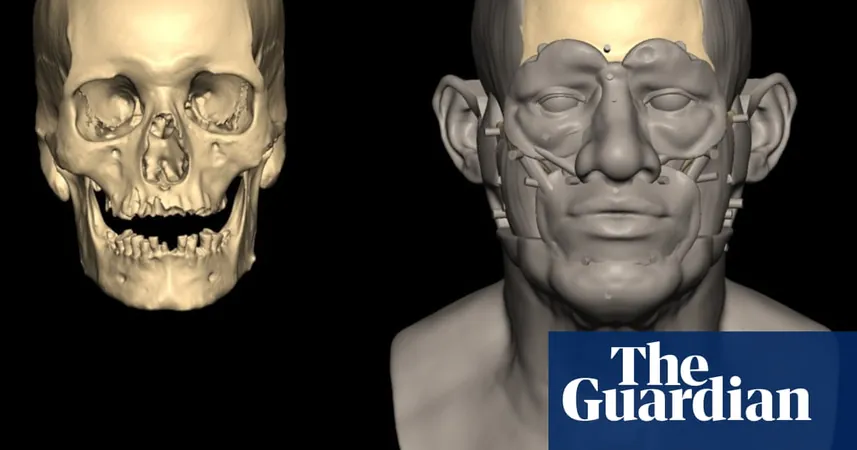
Unlocking the Past: Ancient Egyptian Skeleton First to Be Genetically Analyzed
2025-07-02
Author: Chun
A 4,500-Year-Old Mystery Unraveled
In an extraordinary breakthrough, scientists have successfully sequenced the entire genetic code of a man who lived over 4,500 years ago in ancient Egypt, making him the first individual from this civilization to undergo such detailed genomic analysis.
A Unique Find in an Ancient Pot
The skeleton was unearthed in 1902 from a sealed pottery vessel within a rock-cut tomb in Nuwayrat, located 165 miles south of Cairo. Despite the rapidly degrading conditions of biological materials in the hot Egyptian climate, this DNA was remarkably well-preserved. Researchers believe the unique burial method may have contributed to its exceptional state.
Pontus Skoglund, head of the ancient genomics laboratory at the Francis Crick Institute, expressed his excitement: "It’s thrilling to retrieve genomes from such a pivotal time. Though we have data from just one individual, it's a groundbreaking look into early Egyptian ancestry."
A Glimpse into Egypt’s Old Kingdom
Radiocarbon dating estimates that this man lived just after the momentous unification of Upper and Lower Egypt, a key transition period between the early dynastic phase and the Old Kingdom, famously known as the Age of the Pyramids. This era witnessed monumental advancements, including the construction of the first step pyramid at Saqqara.
Genetic Ancestry and Physical Condition
An analysis of a tooth revealed that this individual had dark skin, brown eyes, and hair, with his ancestry traced back to North African Neolithic populations and a notable genetic mix from the Fertile Crescent, highlighting ancient trade links.
Age-wise, he was considered middle-aged for the time, likely in his 60s, and suffered from severe arthritis. The bones exhibited signs that he spent significant time seated on hard surfaces, hinting at a physically demanding lifestyle.
Craftsmanship and Status
Based on markings found on his bones, researchers hypothesize he might have been a potter or craftsman, involved in labor-intensive work. The introduction of the potter's wheel from the Fertile Crescent around 2500 BC supports this theory. However, the high-status burial in a rock-cut tomb was unusual for someone of his likely profession.
Joel Irish, a professor of anthropology and archaeology, remarked on the peculiarity of finding a skeleton in such a vessel and noted that not just anyone would occupy a rock-cut tomb. "Perhaps he was an exceptionally skilled potter favored by someone influential," he suggested.
A New Frontier in Egyptian Archaeology
This groundbreaking work, detailed in the journal Nature, opens new avenues for identifying other tombs that may contain well-preserved genetic material. Skoglund remarked, "We aim to analyze more skeletons within British collections to construct a comprehensive genetic history of ancient Egypt. This is just the beginning of uncovering the ancient world’s genetic tapestry."



 Brasil (PT)
Brasil (PT)
 Canada (EN)
Canada (EN)
 Chile (ES)
Chile (ES)
 Česko (CS)
Česko (CS)
 대한민국 (KO)
대한민국 (KO)
 España (ES)
España (ES)
 France (FR)
France (FR)
 Hong Kong (EN)
Hong Kong (EN)
 Italia (IT)
Italia (IT)
 日本 (JA)
日本 (JA)
 Magyarország (HU)
Magyarország (HU)
 Norge (NO)
Norge (NO)
 Polska (PL)
Polska (PL)
 Schweiz (DE)
Schweiz (DE)
 Singapore (EN)
Singapore (EN)
 Sverige (SV)
Sverige (SV)
 Suomi (FI)
Suomi (FI)
 Türkiye (TR)
Türkiye (TR)
 الإمارات العربية المتحدة (AR)
الإمارات العربية المتحدة (AR)